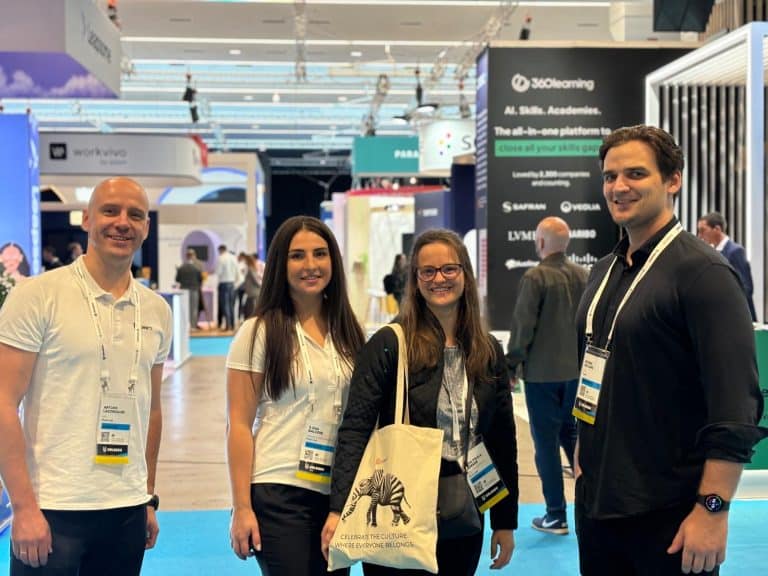Purpose transcends working environments and over the last decade, there were many studies in both behavioral economics and psychology that place purpose on the forefront. More than just studies, when people have a sense of belief for the work they are doing, they are always more likely to be extra engaged and motivated at the workplace. This translates into better learning practices and a sense of fulfilment overall.
But does your organization know how to drive purpose in individuals and have people genuinely connect to it?
You are not the only employer, employee, and person posing such questions?
A 2020 survey of over 502 leaders across global industries showed that while 79% of leaders think that establishing a genuine connection with their people (staff, teams, etc.) and to inspire purpose is critical to success, only 27% regularly actually generate a sense of purpose when working with their colleagues
In today’s complex working environments it becomes a task for leaders (non-exclusive) to embrace purpose and use the transformative practices behind it to drive employee engagement, motivation, and fulfilment in the organization.
Below you can find some examples of Why it is important.
Purpose at the workplace today
Yearning for purpose can be classified as a universal human desire and drive.
In 1974, the historian Studs Terkel published his findings from in-depth interviews with over 130 people across industries collected over a period of many years. As he mentioned, any form of work is “about a search for daily meaning as well as daily bread, for recognition as well as cash, for astonishment rather than torpor; in short, for a sort of life rather than a Monday through Friday sort of dying.” Words of wisdom!
As his research emphasizes, because people spend on average 35% of their lives at work it is a critical topic – meaning involves life itself. People that have purpose are more positive there’s no surprise there. Researchers come to confirm that individuals seem to have an inherent need and desire for meaningful work that doesn’t turn into a routine 9 to 5. Consider the working environment of today (highly impacted by the pandemic and growth of remote work) – a sense of purpose is more important than ever.
Taking a step back even in 2018 a study showed that 83% of people in various workplaces and occupations said that finding meaning in work is an almost top priority on a daily, and more than 50% consider taking a lower-paying job if it will drive meaning and a greater sense of purpose. This August (2020), over 100 of the world’s most successful CEOs pledged that business no longer exists solely for profits, but should become more human-centered, and that means putting purpose first
Inner Workings of Purpose and how it drives Employee Fulfillment
A widely accepted context for purpose is – the reason why (or what for) something is done or created, basically turning something into existence. In a working environment, it means individual meaning, usefulness, and contribution or the reason why one is doing what they doing from a professional standpoint.
When people can clearly identify how their work contributes in a larger context and seeing how it serves a greater reason, individuals strive to become better.
Why?
First off, when purpose becomes part of company culture, it boosts contribution. As shown by neuroscientists the human brain is wired for altruism and to a big extent cooperation. It is how we grow. Studies show that altruistic actions directly affect the “happiness trifecta” of neurotransmitters: oxytocin, dopamine, and serotonin. You can find them as the Love hormones, each of them supporting various forms of human behavior like empathy, social, motivation, and mood.
This translates into positive organizational outcomes like increased engagement, motivation, and workplace fulfillment.
Second, the long-term purpose is a stronger motivator than achievements or results, the latter being more short-term oriented. It is one of the reasons why Prof. Angela Duckworth, at the University of Pennsylvania, found in her studies of resilience, that the pulling force of purpose is one of the key predictors of grit.
“Grit,” as Mrs. Duckworth mentions “is stamina, but it’s not just stamina in your effort. It’s also stamina in your direction.”
Cultivating a motivated, fulfilled, engaged, and gritty workforce begins with purpose.
Ways to Connect Your teammates to Purpose
Infusing people with purpose is one of the best traits for modern leaders to have, but you need to go the extra step and establish a culture that promotes purposefulness as well.
Here are ways to go about it:
Display how a person’s work accomplishments benefit others teammates
Here’s a real life-time example of it – a few years back, I worked with a team responsible for packing and distribution of small components/pieces for medical devices that were shipped to a final manufacturer that assembled them.
It was a difficult quarter in terms of financial results and the team had been low on morale. After some suggested workshops on purposeful work, one leader from the team stepped up and raised a hand – “I’ve been here for 12 years, but last month I learned for the first time why my job exists,” she said. “I was diagnosed with cancer and as I was laying in the MRI machine, I looked up at the logo imprinted on its side and thought to myself, ‘we distributed the widget in this machine.’”; “I realized my job had existed all this time to save my own life.”
That’s how you connect purpose and provide meaning. Things went up-hill from there since her colleagues resonated and became more engaged the moment they realized the bigger picture, that was composed (at first glance) of menial tasks such as components packing and distribution. Before my eyes, her colleagues become more engaged.
Connecting people to purpose starts with consistency, it can’t be a one-time thing. Wharton’s professor, Adam Grant together with his colleagues found in a study that cooperating with as much as one person who has been directly impacted by a task executed by an individual can boost motivation and productivity by four times (400%).
Here are a few practices for showing people how their work benefits their teams:
1. During the onboarding process, make sure people connect early and often, focus on creating naturally emergent stories that can be shared. For example, before delegating or assigning a task, utilize stories as to Why a particular task execution matters.
The feedback that encompasses the classic “you did a good job”, is not enough, be specific and present the difference they made at their job.
Create spaces for employees to tell stories about how their work has impacted others and incorporate these stories into regular team meetings.
Try to encourage a weekly “contribution” journal that presents how a difference was achieved and how it impacted the involved stakeholders.
2. Make the connection between everyday tasks with the bigger purpose that it ties into.
Remember the famous interaction of John F. Kennedy before the Apollo launch missions? As he walked past a janitor he asked, “What do you do here?”; “I’m putting a man on the moon,” the janitor replied and went back to mopping the floor.
The story connects and it just one example of the way NASA’s leaders help maintain a clear focus on this bigger purpose amongst a 300,000-person dispersed team – via storytelling. This approach should be instructive for modern leaders.
Create environments where everyone can clearly see how a task, no matter how small from engineering to maintenance, contributes to a bigger purpose. That is called task identity and is a key predictor of meaningfulness.
Ensure your organization has a team-oriented and contribution-focused mission statement to harmonize energy and that it can be put into words (and actions) at every level.
Make sure each team has a “ladder to the purpose” (i.e. man on the moon) and that every individual across departments can see how their core tasks meet measurable objectives that enable purpose to be delivered and created.
Make a pathway to purpose via daily discussion – create unbiased assessments of whether employees can articulate their contribution via their “daily routine” towards the bigger picture.
Create spaces for each individual to build their personalized purpose statement and generate a clear path for how it connects with the organization.
3. Make contribution goals > achievement goals
We all know the saying, what a culture rewards is usually what a culture becomes. Most organizations unintentionally reward self-serving behaviors. Cultivating a different culture that’s purpose-oriented means rethinking both the nature of the goals/target and what activities and behavior are rewarded.
There are generally two types of goals identified by psychologists at the workplace: self-image goals and compassionate goals. Self-image goals are those used to get ahead of the competition while compassionate goals are those more oriented towards contribution.
Thinking long-term it is those individuals who set other-centered goals that eventually experience more motivation, are learning more, and form more supportive relationships with their colleagues as opposed to those who don’t (and just try to rise on the corporate ladder).
Studies also find that putting the “we” in teams rather than the “I” leads to more meaningfulness and engagement.
Here are some practices/questions that facilitate reaching contribution goals more than achievement goals:
Are the goals your organization established for its employees more achievement-oriented or contribution-oriented?
Set organizational goals that are measured by their relative impact on stakeholders, not just on organizational gains (bottom line).
Encourage individual employees to set goals that lead to contribution for others. Sharing is caring.
Utilize financial incentives to reward purposeful behavior.




